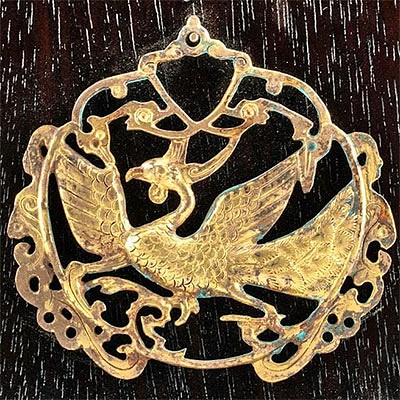Gandharan Stucco Stone Bust - Prince Siddhartha
Lot 64
About Seller
Artemis Fine Arts
686 S Taylor Ave, Ste 106
Louisville, CO 80027
United States
Selling antiquities, ancient and ethnographic art online since 1993, Artemis Gallery specializes in Classical Antiquities (Egyptian, Greek, Roman, Near Eastern), Asian, Pre-Columbian, African / Tribal / Oceanographic art. Our extensive inventory includes pottery, stone, metal, wood, glass and textil...Read more
Estimate:
$2,600 - $3,900
Absentee vs Live bid
Two ways to bid:
- Leave a max absentee bid and the platform will bid on your behalf up to your maximum bid during the live auction.
- Bid live during the auction and your bids will be submitted real-time to the auctioneer.
Bid Increments
| Price | Bid Increment |
|---|---|
| $0 | $25 |
| $300 | $50 |
| $1,000 | $100 |
| $2,000 | $250 |
| $5,000 | $500 |
| $10,000 | $1,000 |
| $20,000 | $2,500 |
| $50,000 | $5,000 |
| $100,000 | $10,000 |
| $200,000 | $20,000 |
About Auction
By Artemis Fine Arts
Jun 17, 2021
Set Reminder
2021-06-17 10:00:00
2021-06-17 10:00:00
America/New_York
Bidsquare
Bidsquare : Ancient & Ethnographic Art Through The Ages
https://www.bidsquare.com/auctions/artemis-gallery/ancient-ethnographic-art-through-the-ages-7094
Ancient art from Egypt, Greece, Italy and the Near East, as well as Asian, Fossils, Pre-Columbian, Native American, African / Tribal / Oceanic, Fine art, and much more! All categories, all price ranges... all legally acquired and guaranteed to be as described or your money back. Artemis Fine Arts info@artemisgallery.com
Ancient art from Egypt, Greece, Italy and the Near East, as well as Asian, Fossils, Pre-Columbian, Native American, African / Tribal / Oceanic, Fine art, and much more! All categories, all price ranges... all legally acquired and guaranteed to be as described or your money back. Artemis Fine Arts info@artemisgallery.com
- Lot Description
Central Asia, Pakistan and Afghanistan, Gandharan Empire, ca. 200 BCE to 400 CE. A hand carved stone bust covered in stucco of a man on an integral plinth, looking forward with a serene expression. The man is adorned by a thick banded necklace with a central floral pendant, and his earlobes are stretched from heavy earrings, but none are present. His head tilts forward slightly, the forehead furrowed, arching eyebrows above large almond shaped eyes, a small aquiline nose with closed lips below a fabulous mustache. These details create an expression of calm contemplation, a handsome man of status, perhaps a depiction of prince Siddhartha as he gains enlightenment and transforms into Buddha. His head is topped with a conical coiled coiffure to indicate an ushnisha or topknot. This bust was painted at one time, and small traces of yellow pigment remain around the ears and ushnisha. A handsome bust that perhaps adorned a temple or monastery. Size: 3.75" L x 4" W x 13.5" H (9.5 cm x 10.2 cm x 34.3 cm)
The earliest findings of Indian stucco art have been discovered in the Gandharan region, northern Pakistan and Afghanistan, and it was eventually introduced into the southeastern parts of the subcontinent. Stucco art is mainly a mixture of lime, sand and mud, but may also contained gypsum. Coating a carved limestone in stucco allowed the artisan to create fine details, such as the coils of hair. The top of the Buddha’s head was said to have either a fleshy perturbance, with curling hair, or a fiery flame that pointed towards the sun to indicate his divinity. The topknot hairstyle came to represent enlightenment, and the stretched earlobes indicated a wealthy man that had cast away his materialistic possessions and jewelry. Buddhism became fashionable amongst Gandharan elites, and the art produced at this time depicting the Buddha are some of the most striking Buddhist images from the past. Their artistic tradition also reflects the conquest of Alexander the Great and the introduction of styles from all sides, blended into a uniquely Gandharan tradition, which this Buddha exemplifies.
Provenance: ex-Barakat Gallery, Beverly Hills, California, USA, acquired prior to 2000
All items legal to buy/sell under U.S. Statute covering cultural patrimony Code 2600, CHAPTER 14, and are guaranteed to be as described or your money back.
A Certificate of Authenticity will accompany all winning bids.
We ship worldwide and handle all shipping in-house for your convenience.
#159525Stucco is chipping with losses to high relief peripheries. Surface wear, nicks, chips and abrasions commensurate with age. Old inventory label near the base. Details are clearly defined and areas of mineral deposits. Nice traces of painted pigments!Condition
- Shipping Info
-
All shipping is handled in-house for your convenience. Your invoice from Artemis Gallery will include shipping calculation instructions. If in doubt, please inquire BEFORE bidding for estimated shipping costs for individual items.
-
- Buyer's Premium



 EUR
EUR CAD
CAD AUD
AUD GBP
GBP MXN
MXN HKD
HKD CNY
CNY MYR
MYR SEK
SEK SGD
SGD CHF
CHF THB
THB















